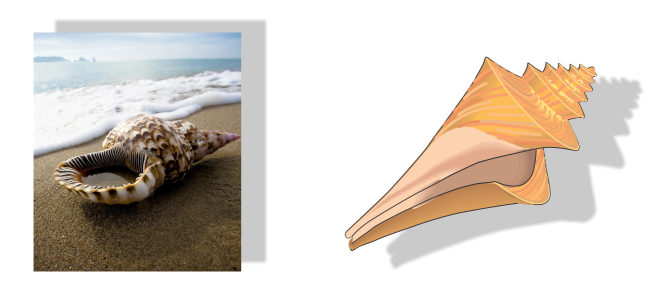Vector effects
There are two types of vector effects: effects, such as bevels, blends, contours, and extrusions, which can be applied only to vector objects; and effects, such as envelopes, drop shadows, inner shadows, block shadows, lenses, perspective, and mosaics, which can be applied to both vector and bitmap objects.
A vector effect (drop shadow) is applied to a bitmap (left) and vector object (right).
The following table provides a quick reference of vector effects.
|
Lets you add 3D depth to a graphic or text object by making its edges appear sloped (cut at an angle)
For more information, see Create bevel effects.
|
||
|
Lets you create a progression in shape and size from one object to another. Blends are often used for creating realistic shadows and highlights in objects.
For more information, see Blend objects.
|
||
|
For more information, see Add block shadows.
|
||
|
Lets you create 3D effects and cuttable outlines for outputting to devices such as plotters, engraving machines and vinyl cutters
For more information, see Contour objects.
|
||
|
For more information, see Add drop shadows and inner shadows.
|
||
|
For more information, see Shape objects by using envelopes.
|
||
|
For more information, see Create extrusions.
|
||
|
For more information, see Impact effects.
|
||
|
Lets you change how an object area beneath the lens appears, not the actual properties and attributes of objects
For more information, see Apply lenses.
|
||
|
For more information, see Apply perspective.
|
||
|
For more information, see Bitmap mosaics (PhotoCocktail effect).
|
||
|
For more information, see Vector mosaics (Pointillizer effect).
|
